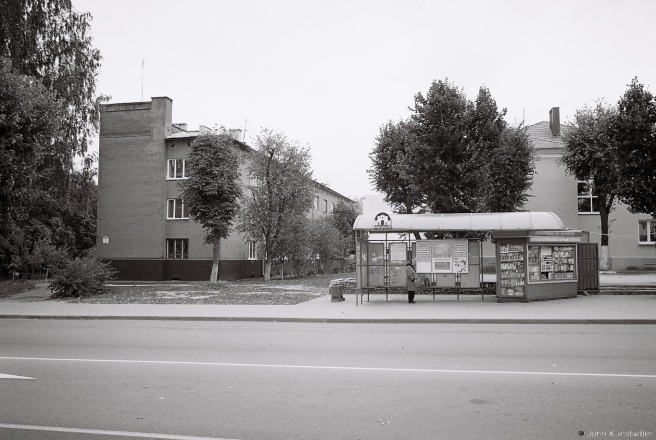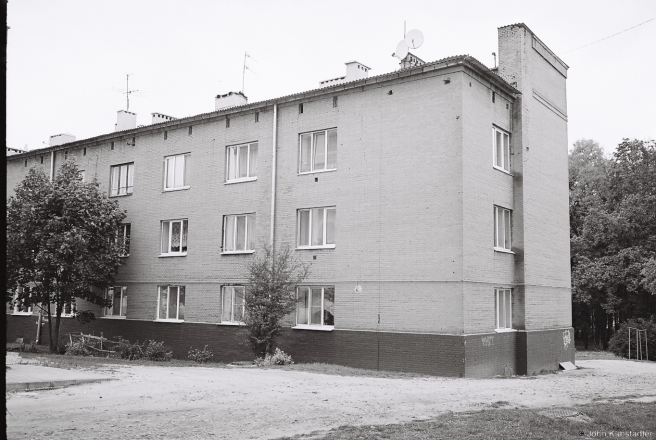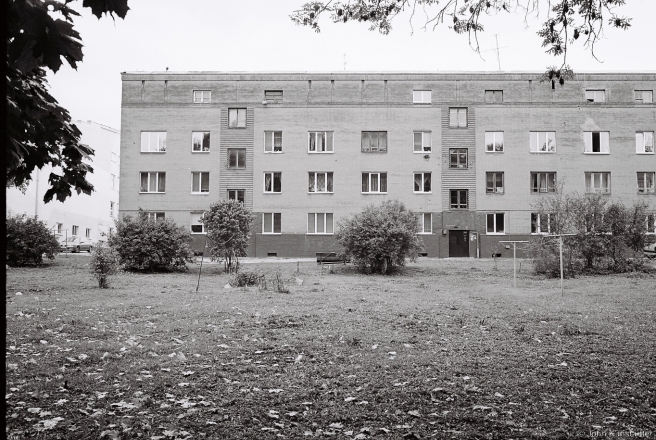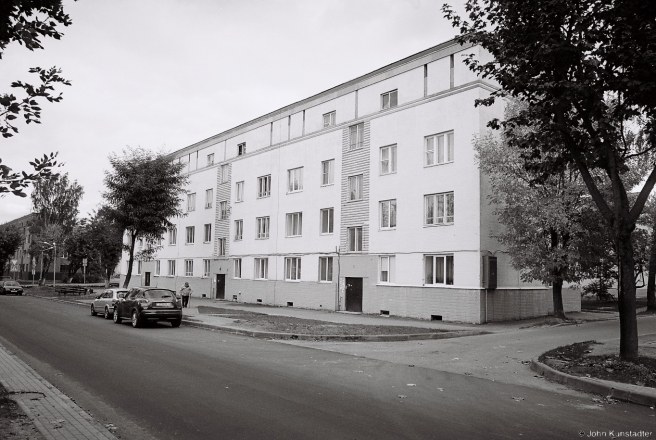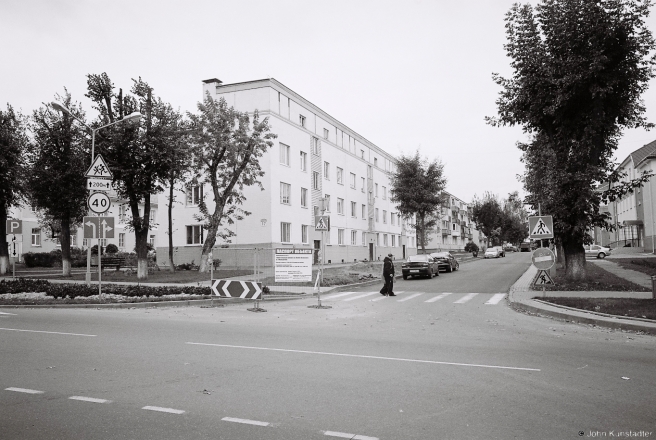Survey of the architectural patrimony of Maladzjechna 2015 (I/VIII). Экспедыцыя па архітэктурнай спадчыне Маладзечна 2015 г. (I/VIII).
A city of 100,000 about 70 kilometers to the northwest of Mjensk, Maladzjechna goes about its business with quiet dignity and a firm sense of local identity and history. Maladzjechna is known for its college of music, named after Mikhal Kljejafas Ahinski (Міхал Клеафас Агінскі), a renowned patriot of the Grand Duchy of Lithuania/Polish-Lithuanian Commonwealth and composer (e.g., his moving polonaise “Farewell to the Homeland” — “Развітаньне з Радзімай”/”Pożegnanie Ojczyzny”: https://www.youtube.com/watch?v=T90B235qVtg). Ahinski probably composed this polonaise at his estate in Zaljes’sje (Залесьсе), not far from Maladzjechna. In 1999 the city commendably took the lead in Belarus in the long-overdue (and to date stalled) re-naming of streets.
Functionalism: Polish army garrison in Hjeljanova.
Between 1920 and 1939 the western Belarusian lands, including Maladzjechna, were incorporated into the Second Polish Republic. Maladzjechna lay near the border with the central and eastern Belarusian lands, which had been occupied and annexed by the Soviet Union. In the mid-1920s the Polish authorities began to construct a garrison for the Polish Army’s 86th infantry regiment in Hjeljenova (Гелянова; Helenów in Polish), then on the outskirts of Maladzjechna. Parts I-III of this survey cover a selection of buildings from this former Polish garrison, most of which are still used as apartment buildings. This complex is another outstanding example of the patrimony of Polish functionalist architecture (a search for a national style through the amalgamation of elements of the Polish Zakopane style and constructivism) in Belarus. See photos of the day devoted to other examples of the patrimony of Polish functionalism in Belarus in Harodnja (Grodno) November 20-26 and 28, 2016; Hlybokaje September 18-19, 2016; ; Braslau September 17, 2016 and September 29, 2015; and Pinsk April 24, 2016.
I highly recommend the detailed architectural and historical studies of Hjeljanova in Belarusian by the outstanding local historian Uladzimir Sadouski (“yozas_gubka”): http://www.rh.by/by/190/10/5361/, http://yozas-gubka.livejournal.com/36287.html, http://yozas-gubka.livejournal.com/43369.html.
Часткі І-ІІІ: гарнізон 86-а пяхотнага палка ВП у Гелянове. Гэты ансамбль – узор спадчыны функцыяналізму ў Беларусі. Гл. іншыя прыклады гэтай спадчыны ў Гародні (фотаздымкі дня 20-26 і 28 лістапала 2016 г.), Глыбокім (фотаздымкі дня 18-19 верасьня 2016 г.), Пінску (фотаздымкі дня 24 красавіка 2016 г.) і Браславе (фотаздымкі дня 17 верасьня 2016 г. і 29 верасьня 2015 г.).
Таксама параю чытаць выдатныя даследваньні па гарнізону ў Гелянове маладзечанскага краязнаўца Ўладзіміра Садоўскага: http://www.rh.by/by/190/10/5361/, http://yozas-gubka.livejournal.com/36287.html, http://yozas-gubka.livejournal.com/43369.html
I. Former officers’ quarters at Chkalava 2 and Jasinskaha 17, on opposite sides of the street now known as Masherava.
І. Былыя казармы для афіцэраў з абодвух бакоў вул. Машэрава (Чкалава 2 і Ясінскага 17).
The quarters at Chkalava 2 retains the distinctive look and color of the original brick facing. In the first picture one can see at the bus-stop shelter a depiction of the triumphal arch which the Polish authorities erected in commemoration of the victory over the Bolsheviks in 1920 and which stood at this place until the Soviet authorities destroyed it in the early 1960s
The quarters at Jasinskaha 17 were refaced by local authorities in 2011 in anticipation of the national harvest festival (Dazhynki), held in Maladzjechna in 2011.
